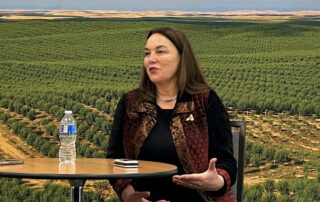Almond Board CEO Clarice Turner Among Top 50 Diverse Candidates to Lead Boards
Courtesy of the Almond Board of California
The Almond Board of California congratulates President and CEO Clarice Turner for being named one of the Top 50 Diverse Board Candidates in America by Equilar and the Nasdaq Center for Board Excellence.
The award was created to provide a definitive roster of “exemplary individuals among the pool of highly qualified diverse candidates who will propel companies and boards into the next era of board leadership,” said David Chun, founder and CEO of Equilar, a national executive intelligence firm.
“I want to give a heartfelt thank you to Equilar and Nasdaq not just for the honor but also for their collaborative dedication to advancing opportunities for underrepresented groups within today’s corporate boardrooms,” said Turner. “The Almond Board of California has long understood that different experiences and viewpoints make our industry and our communities stronger, more inclusive and more vibrant.”
Nominations for the designation came from a number of organizations across the country, a range of Equilar Diversity Network partners and the selection committee, composed of directors on S&P 500 boards, leaders in the board search industry and distinguished figures from the corporate governance sector, Equilar said.
“The Board of Directors is delighted to congratulate Clarice on this outstanding leadership distinction,” said Alexi Rodriguez, chair of ABC’s Board of Directors. “It’s an honor for her to be recognized by major business leaders around the country and it’s a testament to her leadership abilities, which are a great asset to our industry.”
Turner has a long history of serving on corporate and non-profit boards, including the Culinary Institute of America, Delicato Family Wines, the National Restaurant Association, Washington State University School of Business and San Francisco State University Lam School of Business.















